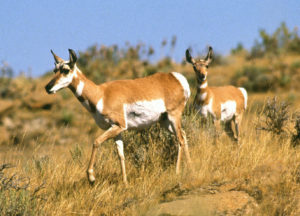Finding a Place for Science

To view the photo-rich magazine version, click here.
Originally appears in the Winter 2017 issue
by Sarah Hackworth and Dr. Ana Houseal
THE CONNECTIONS WE MAKE as adults are very different than those made by the children we teach, in part due to more and varied experiences. While completing my Master’s Degree at the University of Wyoming I helped organize curriculum development workshops with my advisor (second author) Dr. Ana Houseal in partnership with a Wyoming school district. Every three months for the last several years a team from the university has driven many hours to a rural Wyoming town to spend a few days helping guide elementary school teachers through the daunting task of developing new Science curriculum. Last summer, during one of our curriculum development workshops, a third grade teacher excitedly told us that she was combining her English-Language Arts (ELA) and Science curriculum with a unit on whale migration. We gently prodded her with, “Isn’t there a migration story closer to home? One that your eight-year-old students might be more familiar with?” The largest pronghorn antelope migration occurs fairly close to her community. “How could I have missed this connection?” she asked us. Although it seems obvious in retrospect, she was so focused on connecting the two academic subjects; she failed to consider how the context of the readings related to her students.
A small shift in thinking and research revealed many resources for this teacher’s new place-based integrated unit that not only combined ELA and Science curriculum, but also used examples closer to home. Starting with locally relevant examples can shift your frame of mind when designing new lessons or curriculum. This small shift can also help ensure that your students become more personally invested, connect to local issues, and develop an appreciation for their communities. By considering the organisms your students might encounter as they explore their local place, they can connect to their environment while gaining an understanding of the science content.
This content is restricted to subscribers only.
If you are not yet a subscriber, please consider taking out a subscription here.
If you are an existing subscriber, kindly log in or contact us at info@greenteacher.com for more information.










